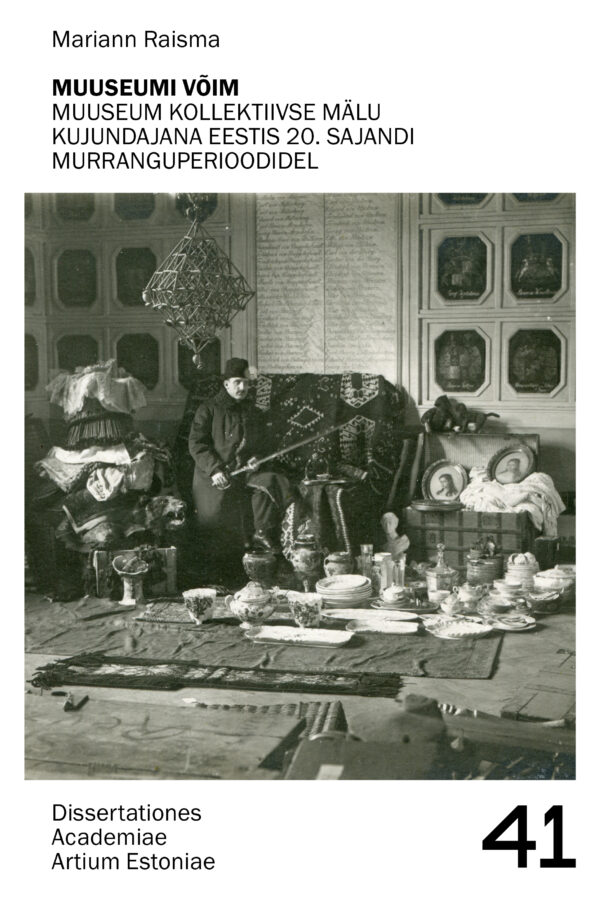
Museums have shaped societies’ understanding of the past in many ways over the past two centuries. The museum guides the way we think about history, determines the balance points of forgetting and remembering, and shapes the hierarchy of values related to heritage.
Mariann Raisma’s doctoral thesis „Muuseumi võim. Muuseum kollektiivse mälu kujundajana Eestis 20. sajandi murranguperioodidel“ („The Power of the Museum. Shaping Collective Memory in Estonia during the Turning Points of the 20th Century“) focuses on the analysis of the power and influence of the museum as a medium of cultural memory using the example of the Estonian museum field. Since our identity is largely based on what we remember and what we forget, it is important to understand and make sense of why and how collective memory has been shaped at different times and how it has changed. The research here does this on the basis of Estonian museum history of the 20th century, using three major upheavals in the years 1919–1925, 1940–1941/1944–1953 and 1987–1994 as examples.
The history of Estonian museums allows us to observe how the main directions, values and canons of shaping cultural memory changed during social and political upheavals: emphases in themes and their representations, interpretations and ideologies, museums as an institution, their hierarchy and names, the dynamics of the relationship between power and the institution and the ability of the museum, the will and ability to shape society’s collective memory.
The identity and institutions of the Estonian museum field were also changing throughout the 19th and 20th centuries. century – starting with self-definition through European culture, museums moved to Heimat and from there to valuing ethnicity, which ended in large national museum ideas and divided into various specialized museums during the 20th century. In the early decades of the 20th century, the regional discourse was replaced by the national one, then by the Soviet-Marxist one, and in the last decade of the century, national cultural memory was vigorously restored. This was also expressed in the permanent exhibitions on history: in the 1920s, folk culture was legitimized as elite culture, in the 1940s, a normative approach to historical materialism was established, and from the end of the 1980s, nationalism again triumphed, which also found an outlet in new museological solutions. When analyzing all these changes, the hybrid nature of Estonian museum history and its interweaving with different cultural spaces and paradigms have been emphasized.
In all three periods of upheaval discussed in the doctoral theses, museums were among the first to shape the new canon of cultural memory. Moreover, largely as a result of these three turns, a unique Estonian museum field has developed.
Supervisors: Prof. Linda Kaljundi (Estonian Academy of Arts), Dr. Anneli Randla (Estonian Academy of Arts)
External reviewers: Dr. Anu Kannike (Estonian National Museum), Dr. Marleen Metslaid (Estonian National Museum)
Opponent: Dr. Anu Kannike
Estonian language editors (except articles): Hille Saluäär, Sirje Toomla
English language editor: Refiner Translation Office
Series design: Indrek Sirkel
Layout: Pärtel Eelmere
Dissertationes Academiae Artium Estoniae 41
466 pages, in Estonian
Estonian Academy of Arts, 2023
ISBN 978-9916-740-04-0 (print)
ISBN 978-9916-740-05-7 (pdf)
ISSN 1736-2261
